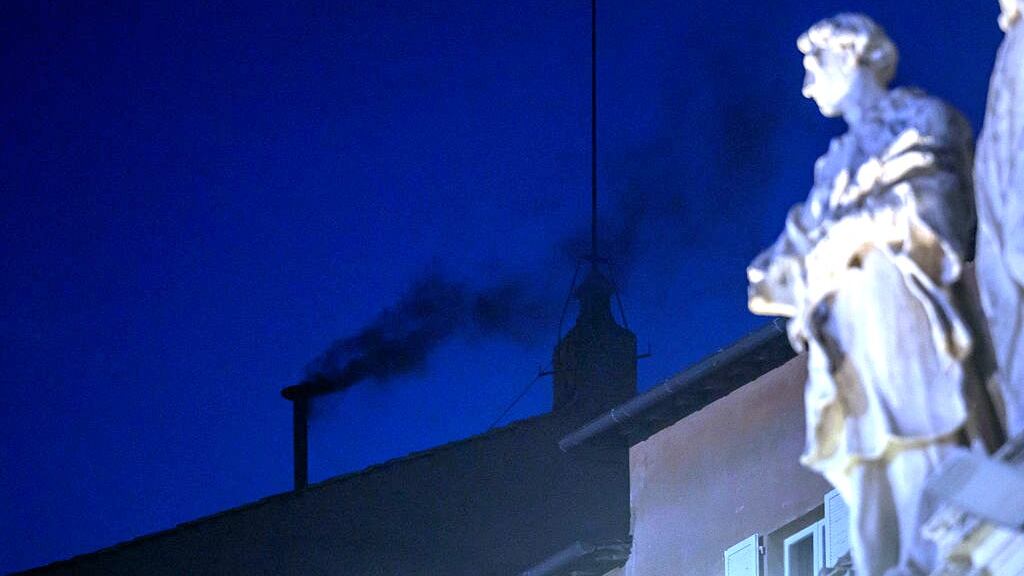The smoke from the first ballot of the Conclave to choose the successor of Francis was black, precisely at 9 pm local time, indicating that the new Pope was not elected after the first vote cast by the 133 cardinal electors of the College of Cardinals locked in the Sistine Chapel.
PUBLICIDAD
The process started promptly as scheduled at 4:30 pm on this Wednesday, May 7, after the Master of Liturgical Celebrations, Diego Ravelli, pronounced the “extra omnes” and all individuals not part of the College of Cardinals left.
PUBLICIDAD
When could the new pope be elected?
This is how the first day of the Conclave ended, which had only one planned vote.
The process began at 10 am with the Mass Pro Eligendo Romano Pontífice celebrated in St. Peter’s Basilica in the Vatican, presided over by the cardinal dean of the College of Cardinals, Giovanni Battista Re, and concelebrated by 220 cardinals, both electors and non-electors.
The cardinals will meet again on Thursday morning to carry out two more votes, and if no cardinal receives two-thirds of the votes, a second black smoke will appear around 12:30 hours. In this case, in the afternoon, they will lock themselves again in the Sistine Chapel where two new scrutinies will take place, at the end of which, if none is positive, a third black smoke will appear.
On the contrary, if in any of the votes this Thursday a cardinal obtains the qualified majority of two-thirds (89 votes) white smoke would emerge at the following tentative times: 10:30 am, 12:30 pm, 5:30 pm, or 7 pm (all times in Italy, six hours ahead of the East Coast time in the United States).
If at the end of the second day of the Conclave the seat remains vacant, the cardinals will once again retire to the Casa Santa Marta. In the following days, the same voting process will continue and if on the third day (May 10) the white smoke still hasn’t appeared, the cardinals will have a day of prayer and free discussion.
The last two conclaves closed on the second day. In 2005, the election of Benedict XVI was resolved in approximately 26 hours (two days) after four votes. In 2013, the appointment of Pope Francis was finalized in 25 and a half hours (two days) after five votes.
In the case of John Paul II, in October 1978, the conclave lasted four days and eight elections..
Vatican specialists hope that the election will not go beyond Thursday and, at most, will extend until Friday morning in an attempt to send a message of unity.
Throughout the process, the 133 cardinals must comply with the oath taken on Wednesday in which they commit to “observe with the utmost fidelity” the secret regarding everything related to the election of the new pope, both during and after the election.
